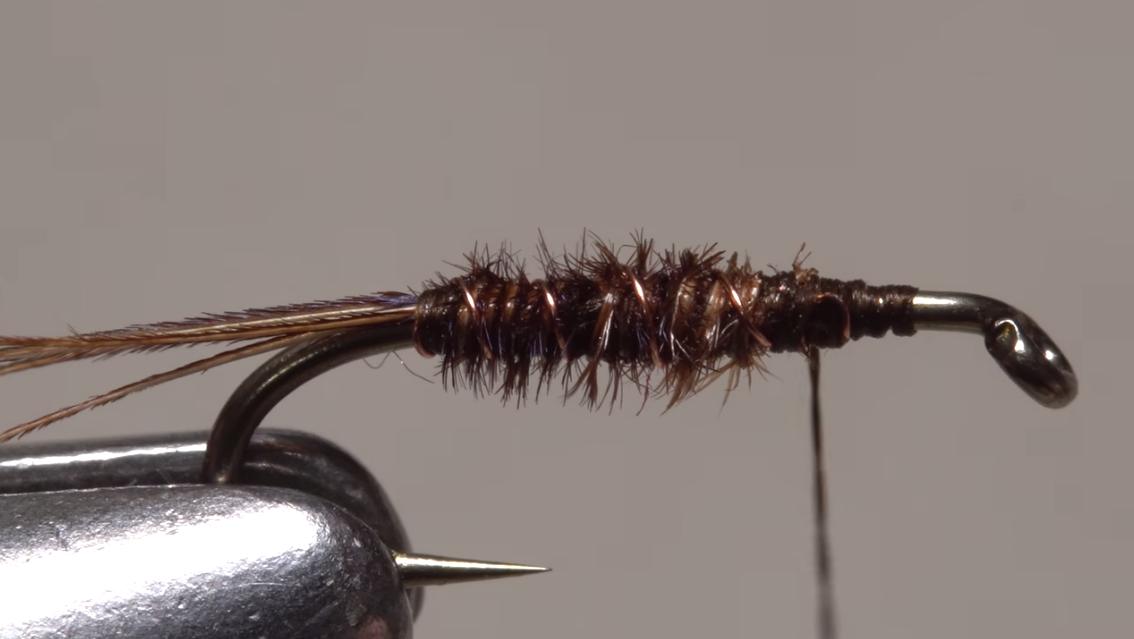The venerable Pheasant Tail Nymph turns up in most fly boxes, as it should. It’s a buggy pattern, and the iridescence of the peacock herl tied in as the bug’s abdomen always seems to draw trout to this classic fly.
Over the years, the patterns has evolved somewhat, thanks largely to the introduction of synthetic material to fly tying — today’s most common variances of the Pheasant Tail Nymph sport weighted beads or hardened UV resin. Or, as Tim Flagler demonstrates below, a short strip of translucent tinsel.
The tinsel adds a bit of shine to the fly, but it’s real purpose is to imitate the air bubble that a lot of natural aquatic insects will use to “ride” to the surface — Flager ties this version of the Pheasant Tail Nymph without any weight, which gives more credence to that imitation.
While the vast majority of the nymphs I have in my fly box are weighted (I’d much rather cast a weighted fly than I a tippet weighted with split shot), I can definitely see the merits of tying this version of the popular pattern without weight. It’ll ride higher in the water column, and as the drift ends, it will rise to the surface on the swing.
Finally, despite Flagler’s version coming in a diminutive size 18, it’s not a beast to tie. See for yourself.



